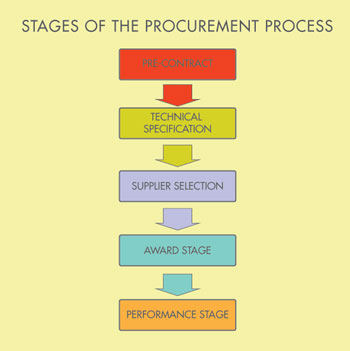Effective Contract Transition: Handling People Management
Part 4 of a 5-part article on making outsourcing changes and transactions run smoothly

4: People Management
The contract transition period between service providers can be a period of great disruption, which can create financial risk for all parties. The goal should be a commitment by the existing service provider to transfer well-maintained equipment and operational data to the new service provider while eliminating operational impact to the facility occupants. Third-party consultants, aligned with the CTM team, can sometimes support all involved parties and may minimize the disruption and risk.
The most vulnerable aspect of the transition is the “people” aspect. Lack of understanding, poor follow-through, resistance to change, lack of buy-in, and insufficient training can derail even the most comprehensive set of processes. A carefully thought-out and implemented change management engagement process can mitigate potential service interruptions related to the transition.
Successful transitions intentionally incorporate the “people” process (or change management engagement process) into overall contract transition management. Intentional incorporation means the various stakeholders (procurement, HR, C-suite, facility management team, and possibly others) are effectively engaged through agreed-upon communication processes and mechanisms for internal discussion, debate, and feedback; and receive the support they need to roll out the CTM plan to staff, clients, and others.
It is important to remember that while change may have a clear starting point, the end point is often vague and gradual. Thus it is important that managers retain access to needed supports even after the contract change has been implemented.
The more transparent the process, the better. Procurement, HR, the C-suite, and facility management should work with total transparency in the process and legal requirements to protect the company procuring services. The desired outcomes must be clearly understood by all. It is essential to have effective change management and great communication to affected employees who work in affected properties. This is especially true if service levels will change and cause a cultural shift, which should be monitored and well-communicated at all levels of the organization.
The transition plan should also include how future communication will take place, including: frequency, media, and breadth of distribution. As an example, will communication be via internal versus external party reviews? Will you use full quarterly business reviews? Dashboard reporting through a CMMS program?
This is also a good time to set down the first-year milestones based on the new contract, including specific projects, metrics reporting, and promised deliverables, perhaps in the form of a balanced scorecard. Discuss conformity to the contract specs and agreed service levels, and further define and clarify roles and responsibilities.
Bottom line, there is no magic potion. Both facility manager and service provider need to work together. As in any good relationship, this involves setting realistic, well-defined goals, creating a strong communication plan, seeing diligent follow-through by all parties, following the process steps, and committing to making it work from the beginning.
Teena Shouse, CFM, IFMA Fellow, is vice president of corporate services at Facility Engineering Associates. She has over 26 years of experience in service-related fields, mainly facility management. She can be reached at teena.shouse@feapc.com.
Related Topics:
















